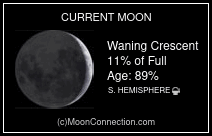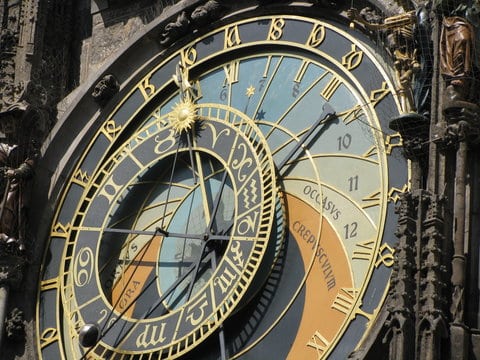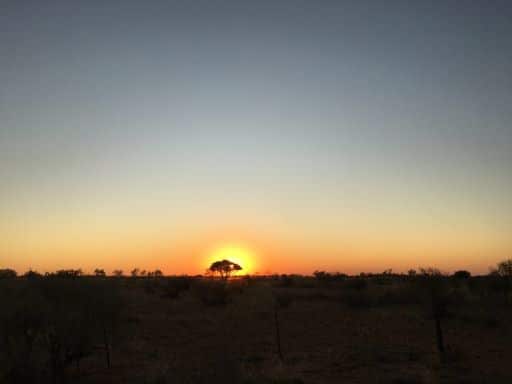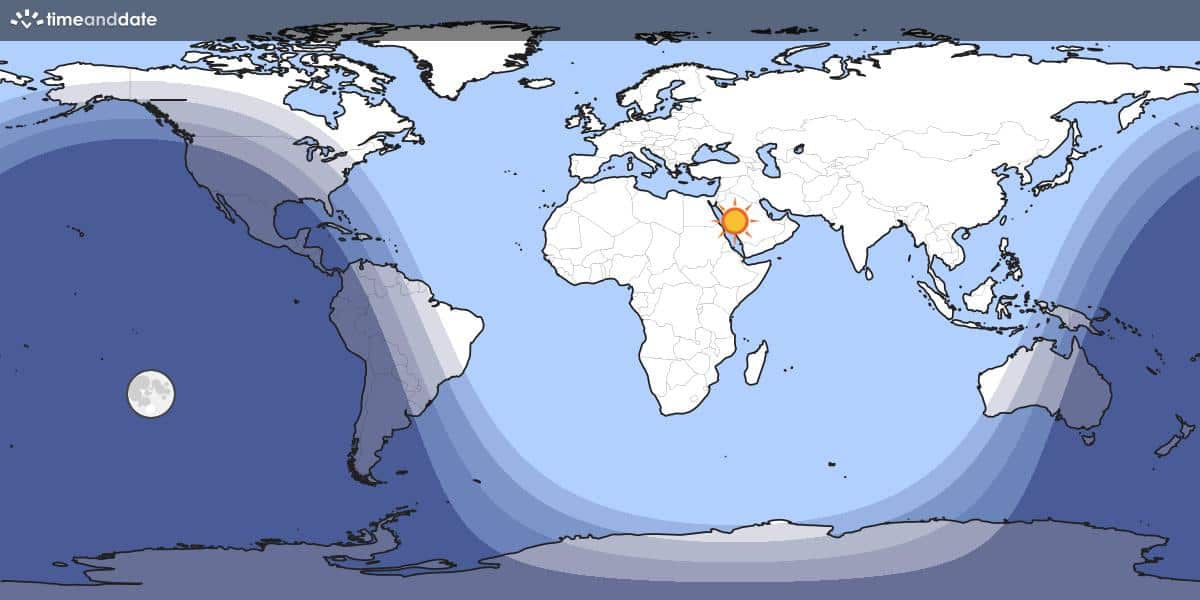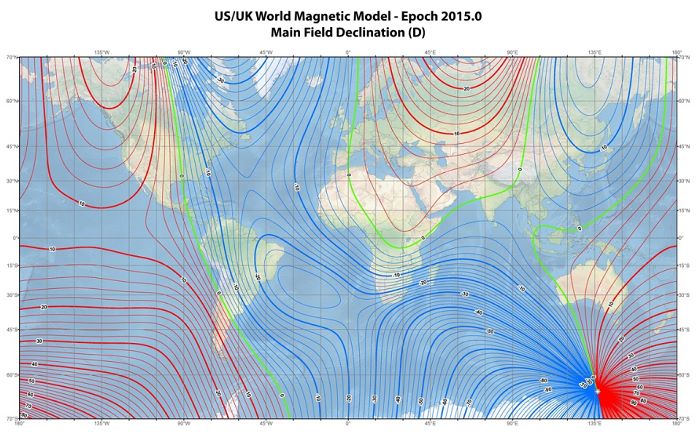Southeast – Chart 1
Steve Gottlieb’s Observations
NGC 2187A = ESO 057-068 NED1 = PGC 18355
06 03 44.2 -69 35 18; Dor
24″ (4/11/08 – Magellan Observatory, Australia): this is the slightly fainter southwest component of a double system (both mentioned by Herschel, although Dreyer assigned only 1 NGC number). At 260x, the SW galaxy is fairly faint to moderately bright, slightly elongated E-W, 40″x35″, weak concentration and a lower surface brightness.
Notes: John Herschel discovered NGC 2187A = h3025 on 23 Dec 1834 and recorded a “Double nebula, position 12.5 degrees; larger pB, R, gradually brighter in the middle, 40″; smaller vF, R, gradually little brighter middle.” His position (measured on 3 sweeps) corresponds with the double system ESO 57-68A. On the other two sweeps he only described a single object and he gave a single entry in his General Catalogue (GC). As a result Dreyer also assigned a single NGC designation
NGC 2187 = ESO 057-068A = AM 0604-693 = PGC 18354
06 03 48.3 -69 34 59; Dor
V = 12.1; Size 2.5’x1.1′; PA = 79°
24″ (4/11/08 – Magellan Observatory, Australia): although described as a “double nebula” by John Herschel, this close pair of galaxies received a single NGC entry. At 260x the fused pair was oriented SW-NE with their outer halos overlapping. The brighter NE component was fairly bright, round, 35″ diameter, strong concentration. The SW member was between fairly faint and moderately bright, slightly elongated E-W, 40″x35″, weak concentration, with the lower surface brightness of the pair. This duo shines through the eastern portion of the LMC.
Notes: John Herschel discovered NGC 2187 = h3025 on 23 Dec 1834 and recorded a “Double nebula, position 12.5 degrees; larger pB, R, gradually brighter in the middle, 40″; smaller vF, R, gradually little brighter middle.” His position (measured on 3 sweeps) corresponds with the double system ESO 57-68A. On the other two sweeps he only recorded seeing a single object. He called it double in the General Catalogue, although only a single designation was assigned.
Joseph Turner sketched the pair with the Great Melbourne Telescope on 13 Dec 1878, as well as Pietro Baracchi on 3 Jan 1886. The brighter NE galaxy was shown with a small bright nucleus and the SW galaxy with a smoother surface brightness. Baracchi assumed the companion was a new discovery, although John Herschel probably deserves credit.
NGC 2213 = ESO 057-70 = S-L 857
06 10 42.1 -71 31 45; Men
V = 12.4; Size 2.1′
14″ (4/3/16 – Coonabarabran, 178x): moderately bright and large, round, 45″ diameter, slightly brighter core, no resolution. A distinctive 1′ trio, consisting of a mag 11 star and two mag 12 stars in a slight curve, lies 3′ W.
Notes: John Herschel discovered NGC 2213 = h3038 on 9 Feb 1836 and recorded “vF; R; gradually little brighter middle; 30″. A triple star precedes.” His position from this single sweep is 30″ SW of center.
NGC 2210 = ESO 057-71 = S-L 858
06 11 31.7 -69 07 19; Dor
V = 10.9; Size 1.7′
14″ (4/3/16 – Coonabarabran, 178x): bright, relatively large, round, at least 1′ diameter, contains a very bright grainy core and a relatively thin halo, no definite resolution. A mag 14 star is off the SE side [1.3′ from center]. Located 9.3′ NW of a mag 8.2 star and 22′ SE of mag 5.1 Nu Doradus.
NGC 2210 is one of 15 bona-fide ancient GC’s in the LMC and it resides in the eastern halo
Notes: John Herschel discovered NGC 2210 = h3036 on 31 Jan 1835 and logged “vB; S; R; pretty gradually then very much brighter in the middle; 35″ diameter; not resolvable.” He noted the observation probably had a one-degree error in the polar distance as the next two sweeps agreed in position.
Hodge 11 = [H60B] 11 = S-L 868 = ESO 057-076 = KMHK 1700
06 14 22.9 -69 50 50; Dor
V = 12.0; Size 2.5′
25″ (10/17/17 – OzSky): Hodge 11 is one of 15 bona-fide ancient GC’s in the LMC. Using 244x and 397x it appeared fairly bright, large, slightly elongated, 1.5′ – 2′ diameter, no resolution. The surface brightness was fairly uniform except for a fainter thin outer halo.
Notes: Hodge 11 is located in the eastern halo of the LMC 1.1° SSE of mag 5 Nu Doradus, with NGC 2210 (also a bona-fide GC) 46′ NNW. It was an easy hop using a mag 8 star 16′ WNW and a mag 9.4 star 9′ WNW. LEDA 18760, a distant galaxy that shines through the LMC (at ~520 million l.y.), lies 7.8′ E.
Robert Innes discovered Hodge 11 = S-L 868 on a photograph taken with the 10-inch Franklin-Adams camera of the Johannesburg (Union) Observatory. It was catalogued in the 1924 “Catalogue of Clusters and Nebulae Near the Large Magellanic Cloud” as a ” fine object, nebula or compressed cluster with a much smaller one 5′ sf.”
Age: 13.4 billion years. 2022 paper “HST survey of Magellanic Cloud clusters.”
Paul Hodge rediscovered this cluster and included it as an anonymous (#11) “Red Globular” in his 1960 “Studies of the Large Magellanic Cloud. I. The Red Globular Clusters.” (ApJ, 131, 351). It is generally referred to as Hodge 11 in the literature.
Shapley and Lindsay (1963) give a diameter of 100” and remark “circular, condensed centre, outer resolved.”
LEDA 18730 = 2MASX J06155217-6950095
06 15 52.2 -69 50 10; Dor
Size 1.3’x0.9′; PA = 4°
25″ (10/17/17 – OzSky): at 244x and 397x; faint, fairly small, oval 3:2 N-S, 0.6’x0.4′, even surface brightness. This galaxy is located only 7.7′ E of Hodge 11 in the eastern halo of the LMC. Hodge 11 is one of 15 bona-finde ancient GC’s in the LMC!
Notes: Southern Galaxy Catalogue (Corwin): “Overexposed center, very faint corona. Brightest in small cluster, seen thru LMC.”



